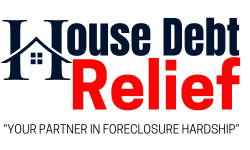A Comprehensive Guide to Reverse Mortgages
By Freddie Avila
Understanding Reverse Mortgages
For AARP members, unlocking the equity in their homes through a reverse mortgage offers a promising avenue for financial security in retirement. This specialized loan, available to homeowners aged 62 and older, allows individuals to convert a portion of their home equity into cash without needing to sell their property. Unlike traditional mortgages, reverse mortgages do not require monthly payments; instead, the loan becomes due in full when the homeowner passes away, sells the home, or permanently moves out.
Exploring Benefits for AARP Members
Reverse mortgages can present significant benefits for AARP members, particularly those who may not have heirs or whose heirs are unable to assume property ownership. By accessing home equity, seniors can supplement their retirement income, cover healthcare expenses, or make necessary home improvements to age in place comfortably. Furthermore, for those placing importance on supporting their families over leaving an inheritance, a reverse mortgage provides the flexibility to maintain financial independence while alleviating their heirs from potential financial burdens.
Navigating Complexities and Risks
Despite the benefits, it’s essential for AARP members to recognize the complexities and potential risks associated with reverse mortgages. Borrowers are responsible for covering expenses such as origination fees, account maintenance fees, and higher interest rates. Additionally, ongoing financial obligations, including property taxes, homeowners’ insurance, and HOA dues, must be met to avoid default and potential foreclosure.
Moreover, while reverse mortgages operate as non-recourse loans, limiting liability to the home’s value, unethical lenders may take advantage of vulnerable seniors by downplaying long-term costs or misrepresenting loan terms. Such practices can leave homeowners unaware of their financial obligations, putting them at risk of losing their homes.
Types of Reverse Mortgages
AARP members should familiarize themselves with the different types of reverse mortgages:
- Home Equity Conversion Mortgages (HECMs): Insured by the Federal Housing Administration (FHA), HECMs are the most common type of reverse mortgage, offering flexibility in how borrowers receive funds.
- Proprietary Reverse Mortgages: Offered by private lenders, these mortgages may have higher lending limits but lack federal insurance, making them suitable for homeowners with high-value properties.
- Single Purpose Reverse Mortgages (SPRMs): Provided by governments or non-profit organizations, SPRMs are designed for specific purposes, such as home repairs or property taxes.
Is a Reverse Mortgage Right for You?
Now that you’re a lot more educated with reverse mortgages, Is it right for you? Before considering a reverse mortgage, AARP members should carefully assess their financial situation. Qualification requires equity in your home, and it’s crucial to ensure your fixed income can cover ongoing expenses like taxes and insurance. If leaving your home as an inheritance is important, be aware that a reverse mortgage could impact those plans. Take the time to explore these factors before making any decisions
Comfortable Retirement Living for Senior Homeowners
Senior homeowners on fixed incomes have options for a comfortable retirement. Downsizing to a smaller property reduces maintenance costs. Renting out part of the home or downsizing to a rental reduces expenses. A Home Equity Line of Credit (HELOC) offers flexible funds. Government programs like SSI and LIHEAP provide housing cost assistance. Alternatives to reverse mortgages, such as home equity conversion loans, offer benefits without drawbacks. Budgeting, financial planning, and community resources help maximize income and minimize expenses for a comfortable retirement.
Embracing Transparency and Ethical Practices
At House Debt Relief, we prioritize transparency and ethical practices in assisting AARP members with reverse mortgages. Our team provides comprehensive support and accurate information, guiding clients through the process with clarity and confidence. We aim to empower seniors to make informed decisions that safeguard their financial well-being and protect them from unethical practices in the lending industry.
Conclusion: Empowering AARP Members
As AARP members navigate the complexities of retirement planning, reverse mortgages emerge as a promising option for maximizing home equity and enhancing financial security. By understanding the intricacies of reverse mortgages, assessing their individual needs, and seeking expert guidance, seniors can embark on their retirement journey with confidence and peace of mind. At House Debt Relief, we stand ready to support AARP members on their path to financial empowerment and a fulfilling retirement, ensuring they are equipped with the knowledge and resources to make informed decisions and safeguard their financial futures.
General Advice and Support for Homeowners Facing Foreclosure
At House Debt Relief, we provide general advice and support for homeowners facing foreclosure, tailored to your unique financial situation. Our primary goal is to offer guidance that aligns with your best interests.
We recommend exploring assistance through non-profit, city, and state resources first. If these resources cannot provide the help you need, please reach out to us for further assistance or to request our advice at any time.
House Debt Relief is here to support you.











